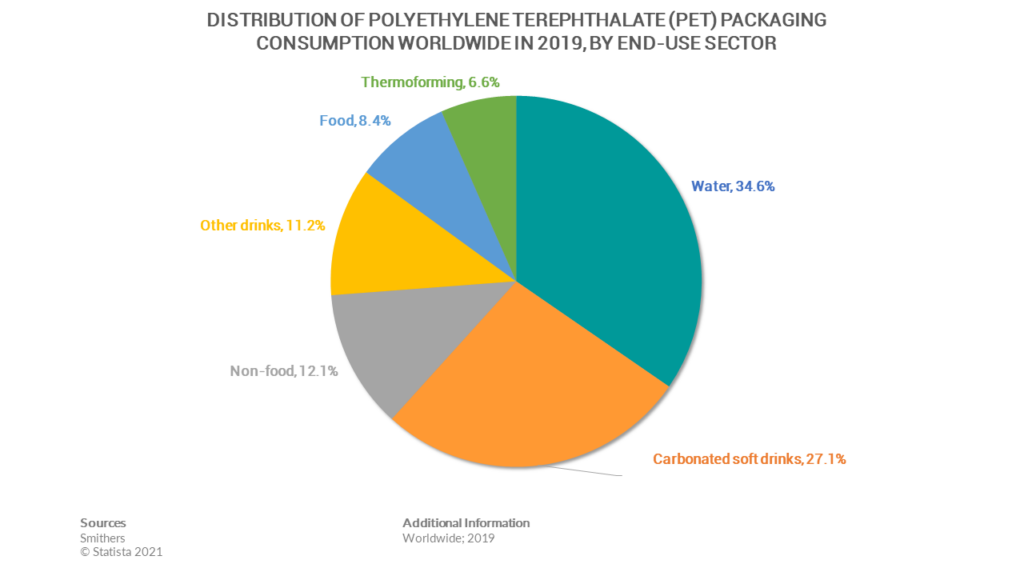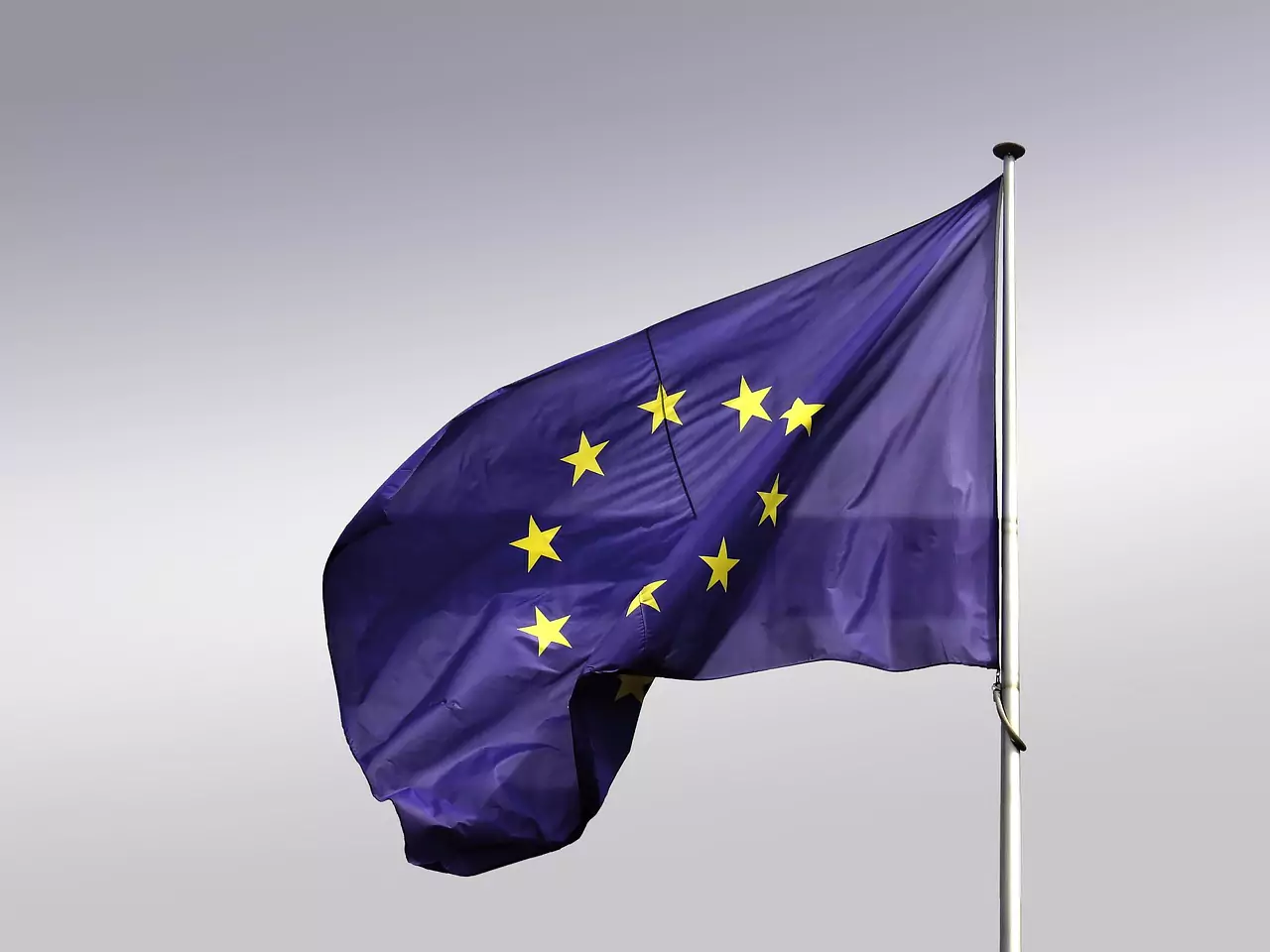Bottled water has become a universal commodity, with 1.3 billion of bottles sold and consumed daily worldwide. In 2019, bottled water accounted for 34.6 percent of global polyethylene terephthalate (PET) packaging consumption, according to recent research by leading market intelligence firm Euromonitor International. The report also shows that PET packaging is the world’s most widely used packaging material.
The widespread consumption of PET packaging can be attributed to its strength, durability, and versatility. It is used by distributors worldwide, including bottles, jars, and containers for beverages, food products, and other consumer goods. The end user market includes households, commercial outlets such as restaurants and cafes, and industrial applications.
Despite concerns about plastic waste pollution from single-use plastics like PET plastic bottles, their popularity continues to grow globally due to convenience and affordability. Unfortunately, globally only 14% of all single-use drinking containers are recycled currently, with plastic bottles being the largest share.
Distribution of PET Consumption Packing Worldwide in 2019
In 2019, the global consumption of polyethylene terephthalate (PET) packaging witnessed a significant distribution across various end-use sectors. PET is widely used in different end-use industries, such as food, beverages, and personal care.
The data revealed that water was the most prominent sector, with a consumption rate of 34.6%, followed by carbonated soft drinks with 27.1%. Additionally, non-food products accounted for 12.1% of PET packaging usage worldwide.
The food sector accounted for 8.4% of the total PET packaging consumption worldwide in 2019. The thermoforming industry also accounted for a significant share of PET consumption at 6.6%. And for other drinks, the ratio counts for 11.2 %.

Largest Regional PET Packaging Consumers
Asia-Pacific is the largest regional consumer of PET packaging, accounting for 36.7% of global PET packaging consumption in 2019. North America is the second-largest market in this sector, with a 20.5% market share, followed by Western Europe with 17.9%.
For 2020-2025, the consumption of PET packaging in the Asia-Pacific region is forecast to escalate quickly, along with the Middle East and Africa. Improving living standards, expanding urbanization, a growing infrastructure of local commerce, and replacing traditional packaging fields are all anticipated to assist this development.
The Expected Future of The Market
The global polyethylene terephthalate (PET) market is rising, with expected growth from $59.39 billion in 2027 at a CAGR of 8.6%. This can be attributed to the increasing demand for PET packaging consumption worldwide by end-use. PET is a versatile material widely used in various industries such as food and beverage, healthcare, personal care etc., often with a process called blow molding.
One of the key drivers behind this growth is the rise in the consumption of PET packaging globally. PET packaging has become increasingly popular across multiple sectors, such as food and beverages, personal care products, and pharmaceuticals, due to its lightweight and durable nature. As a result, distributors of PET packaging are witnessing rising demand from end-users worldwide. In turn, plastic manufacturing companies profit from this development as well.
Exploring the Reasons Behind Growing PET Demand
The demand for food packaging made from PET is likely to increase due to its excellent barrier properties and cost-effectiveness. Additionally, with an increasing population and changing lifestyle patterns across the globe, there is a rising demand for ready-to-eat meals that require convenient and safe packaging solutions.
PET (polyethylene terephthalate) is a popular choice for manufacturers because it has superior barrier properties to other materials such as glass or paper. It protects food products from moisture, oxygen, and other external factors that can cause spoilage or contamination. Additionally, PET is lightweight and durable, making it an ideal transportation choice.
Furthermore, its cost-effectiveness is another reason why PET packaging demand has increased to this vast level. PET packaging is more affordable than other materials, such as glass or aluminum, making it an attractive option for small businesses and corporations.
The Role of Distributors in Market Expansion
Distributors have always played an essential role in meeting the growing demand for various products worldwide. Regarding (PET) packaging consumption, this fact holds as well. Distributors of PET packaging cater to specific segments and provide customized solutions that meet the requirements of their customers. One key advantage of working with distributors is that they offer a vast range of products, which helps businesses find the right solution easily.
The end-use application also plays a crucial role in determining which pet packaging will be used. Distributors understand this and have designed their services accordingly. They focus on understanding customer needs and providing customized solutions that fit their requirements perfectly. For instance, if a business requires pet packaging for food or beverage products, then distributors can provide them with high-quality materials that are safe and hygienic for use with food items.
Wrapping Up
The distribution of polyethylene terephthalate (PET) packaging consumption worldwide by the end-use sector showed significant growth in 2019. The report indicates that this trend is set to continue, with PET packaging becoming increasingly popular across various industries. This is particularly true for the food and beverage industry, where PET bottles have become a staple. I hope you will enjoy this blog and quickly learn some essential facts about the booming market.




